The Berkshires Bowling Alley that Inspired "The Big Lebowski"
It’s been 36 years since the release of The Big Lebowski, the irreverent cult comedy by Joel and Ethan


It’s no surprise that creative artists and writers have flocked to the cultural hub that is New York City over the years. From Jack Kerouac to Emma Lazarus, we’ve tracked down where renowned writers created their greatest works and developed their ideas. You can even go and check out a few of these locations yourself and stand in the footsteps of some of America’s literary stars, then grab a drink where the Beat generation imbibed.
The number of writers and artists who resided at Hotel Chelsea at some point in their lives is incredible. Built in 1883 as a private apartment cooperative, the decline of the Chelsea theater district led to its reopening as a hotel in 1905. It then hosted several famous 20th century writers, becoming a bustling hub of creativity and innovative thought.
Perhaps most notably, Mark Twain stayed here (before it was a hotel) in 1898. Other writers who here include playwrights Arthur Miller and Tennessee Williams, Jack Kerouac, Gore Vidal, Patti Smith, Thomas Wolfe and Charles Bukowski. In fact, some Beat Generation writers created entire works at Hotel Chelsea, and Arthur C. Clarke wrote all of 2001: A Space Odyssey during his stay.
With so many intelligent, eccentric personalities in one building, odd situations definitely arose. For instance, O. Henry supposedly registered under a different name to evade creditors, while Arthur Miller went there to hide from the media after his divorce with Marilyn Monroe. Irish poet Brendan Behan spent his declining moments the Chelsea, where he constantly disturbed guests with bizarre actions and loud vulgarity, before returning to Europe and dying a year later.
On another unfortunate note, writer Dylan Thomas died of alcohol overdose one night at the Chelsea, and Charles R. Jackson committed suicide in his room.
In his essay called “The Chelsea Effect,” Arthur Miller described the hotel’s lifestyle, saying, “This hotel does not belong to America. There are no vacuum cleaners, no rules and shame…it’s the high spot of the surreal.” The hotel continued in operation until 2011 as a “combination transient and residential hotel,” writes Andrew Alpern in The Dakota: A History of the World’s Best-Known Apartment Building, when it went under renovation.
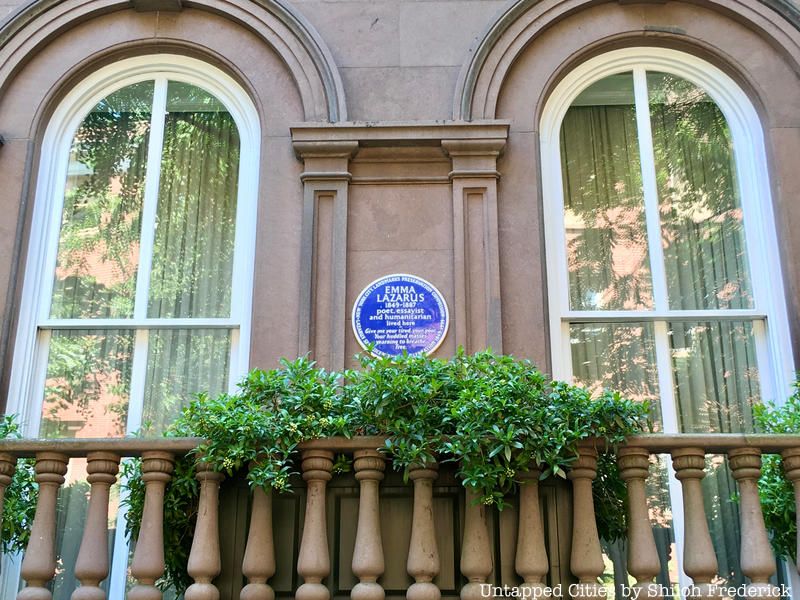
The apartment where Emma Lazarus lived for most of her early life. Image via Daytonian in Manhattan
Finished in 1856 and once called the Winslow Mansion, John E. Devlin sold the house in 1883 to a rich sugar merchant named Moses Lazarus. Lazarus’ daughter, Emma, would grow to write the iconic American poem inscribed at the base of the Statue of Liberty, “The New Colossus.” Emma lived here for most of her early life with her six siblings and would always read books from her father’s library. Several artists lived on the same block at the time, so Emma had much inspiration to draw from. Today her home is still an apartment building.
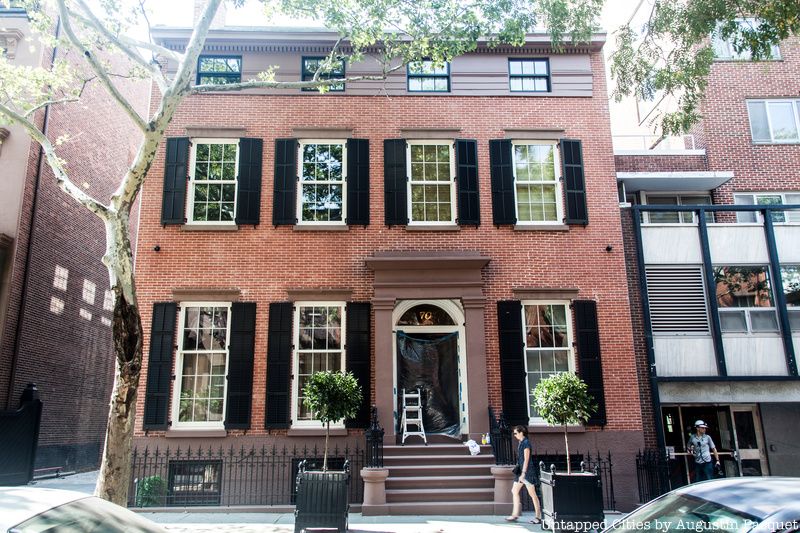
Truman Cpote wrote his renowned works In Cold Blood and Breakfast at Tiffany’s in the basement of this yellow brick Brooklyn Heights townhouse, between the borough’s fruit-named streets, Orange and Pineapple. The house was built in 1839, and Capote lived in the neighborhood from the 1955 to 1965, even telling a reporter “It’s the only place to live in New York.” Capote’s tenant was Broadway stage and set designer Oliver Smith.
Brooklyn Magazine explains that at the time Brooklyn was in decay, far from fashionable and in the middle of urban revival. Capote often wrote about the state of Brooklyn at the time; his short story “A House in the Heights,” which he also wrote at this house, has the line “I live in Brooklyn. By choice.” According to the article, he wrote fondly of the diverse neighborhoods and personalities that lived there as well as the fortune of living near Manhattan.
In 2012, the home sold for $12 million, making it the most expensive family home sold in Brooklyn.
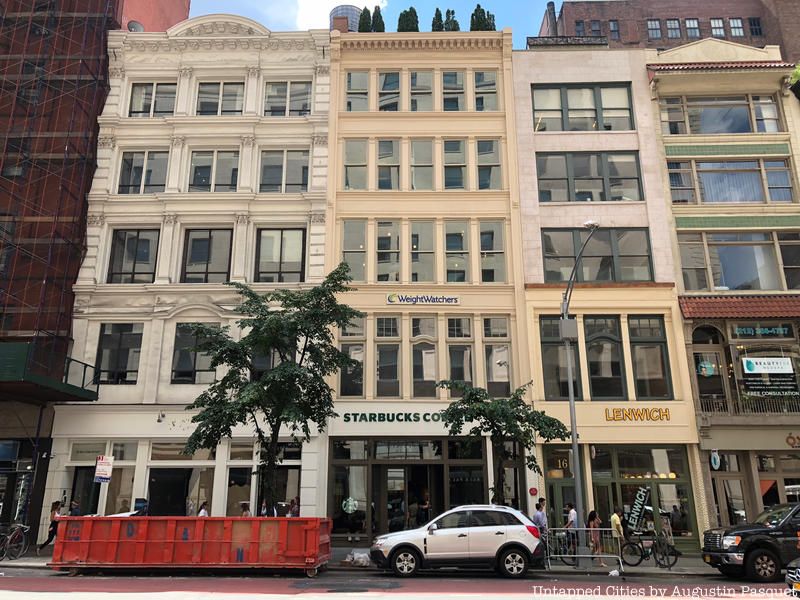
The first woman to receive a Pulitzer Prize for Fiction and the author of The Age of Innocence, Ethan Frome and The House of Mirth, Edith Wharton was born into a wealthy family at a four-story, brownstone mansion at 14 W. 23rd street in 1862. She was baptized at Grace Church at Broadway and 11th Street. From 1866 to 1872, Wharton and her family traveled throughout Europe and returned to this address when she was ten.
She wrote about her dislike for common New York City homes sometimes, once calling this house a “geological horror” in her article “A Little Girl’s New York.” She also found the architecture painfully dull.
After Wharton’s father died in 1882, her mother, Lucretia Jones, lived at 28 W. 25th street. Edith and Teddy Wharton, who was her husband for 28 years, had their wedding breakfast here in 1885. They married at Trinity Chapel on W 25th street, and lived at 884 Park Avenue (she later purchased 882 Park Avenue) during parts of their marriage. Wharton built The Mount, her home in Lenox, Massachusetts, establishing her architecture ideas in print in The Decoration of Houses with the architect James Cogden Jr., who designed the property. In 1910, after the dissolution of her marriage, Wharton permanently left New York for France.
While the New York City homes no longer stand as they once were, people can still see the house where she lived with her mother prior to her marriage on the south side of 23rd street and west of Broadway.
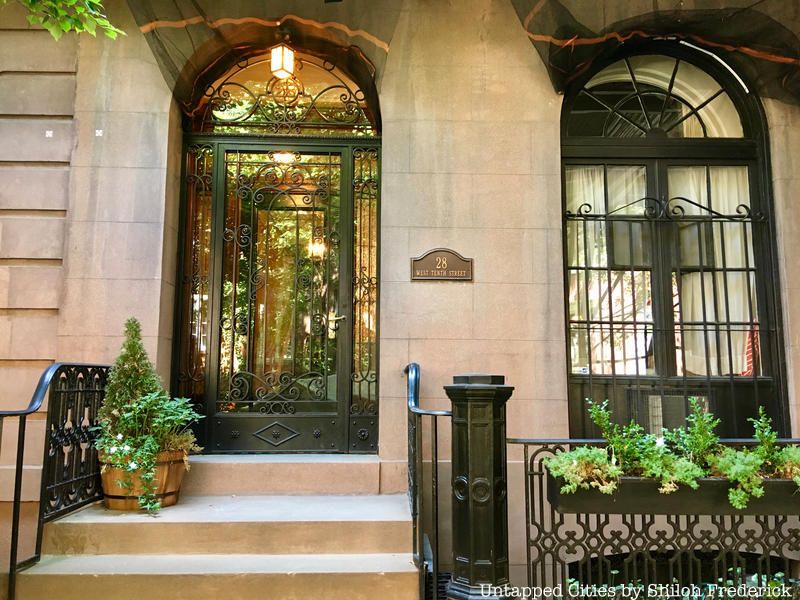
French surrealist artist and writer Marcel Duchamp who is attributed with creating the readymade “Fountain” from a urinal, lived at this address in the late 1950s so he could be close to the Marshall Chess Club at 23 West 10th Street. Duchamp had a passion for the board game and even stopped creating art to focus on chess.
Famous detective novelist Dashiell Hammett also lived at this address from 1947 to 1952 after serving in World War II after the bombing of Pearl Harbor. While he resided at this house, he became interested in leftist politics. His support for the leftist Civil Rights Congress would cause him to get blacklisted during America’s era of McCarthyism.
Hammett also lived at the Kenmore Hall Hotel on West 23rd street. Since Hammett was constantly out of money, his friend and fellow author Nathaniel West, who worked as one of the hotel’s clerks, let Hammett stay at the hotel for free.
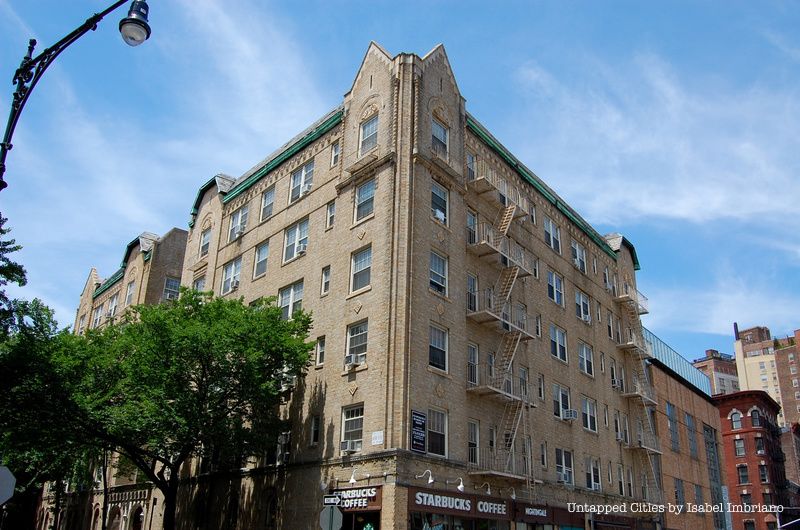 A view of Willa Cather’s home on Bank Street today, where she wrote many of her greatest works
A view of Willa Cather’s home on Bank Street today, where she wrote many of her greatest works
Though Willa Cather is known for the Western prairie settings of her books, she spent the last forty years of her life in New York City. She lived at four different homes in Greenwich Village over the years, in a domestic partnership with an editor named Edith Lewis. However, the most significant of the four homes was at 5 Bank Street, where she lived from 1913 to 1927 and created most of her prominent works.
In 1906, her and Edith moved to their first address at 60 Washington Square South, followed by 82 Washington Place in 1909, where there is a plaque honoring her. From 1927-1932, she lived at the Grosvenor Hotel at 35 Fifth Avenue. Until her death, she lived uptown at 570 Park Avenue.
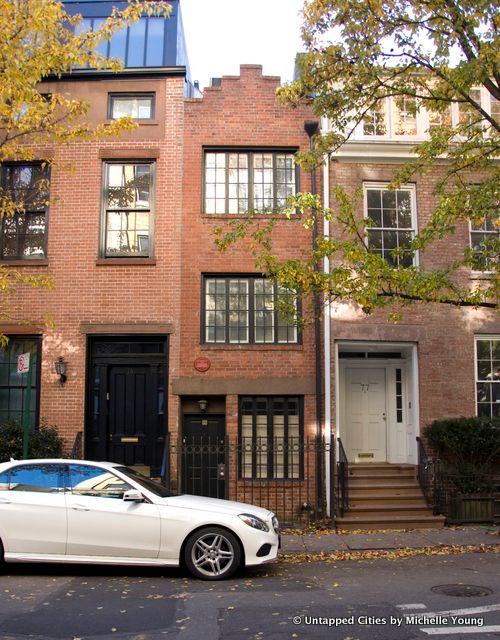
Edna St. Millay’s house
Poet and playwright Edna St. Vincent Millay moved to New York City after graduating from Vassar College in 1917. Though she lived in numerous locations in Greenwich Village, many people are most familiar with her residence at 75 ½ Bedford Street at Commerce Street, which is the narrowest house in Manhattan. She once described her life in New York as “very, very poor and very, very merry.”

206 East 7th Street apartment of Allen Ginsberg
It’s nearly impossible to record all of this Beat generation poet’s New York City residences – the guy moved around a lot. In fact, in 2013 there were entire walking tours of the various places he lived.
According to the description of these walking tours, Ginsberg lived in the East Village for 40 years after graduating from Columbia University. At Washington Square Park, Ginsberg would sometimes give poetry readings.
In 1951, he spent $2.00 per night at Mills House on 160 Bleecker Street, and for the next two years he lived with fellow Beat writer William S. Burroughs at 206 East Seventh Street. Ginsberg lived with his partner, Peter Orlovsky, from 1954 until his death. Their homes included apartments at 170 East Second Street, 704 East Fifth Street, 408 East Tenth Street, and 437 East Twelfth Street. His last apartment was at 404 East Fourteenth Street.
You can read more about his homes here.
Next, check out 13 Historic Houses Converted into Museums in Manhattan. You might also like 7 Spots in NYC Where You Can Drink Like the Beat Generation Did and Jack Kerouac and William S. Borrough’s Brush With Murder at Columbia.
Subscribe to our newsletter